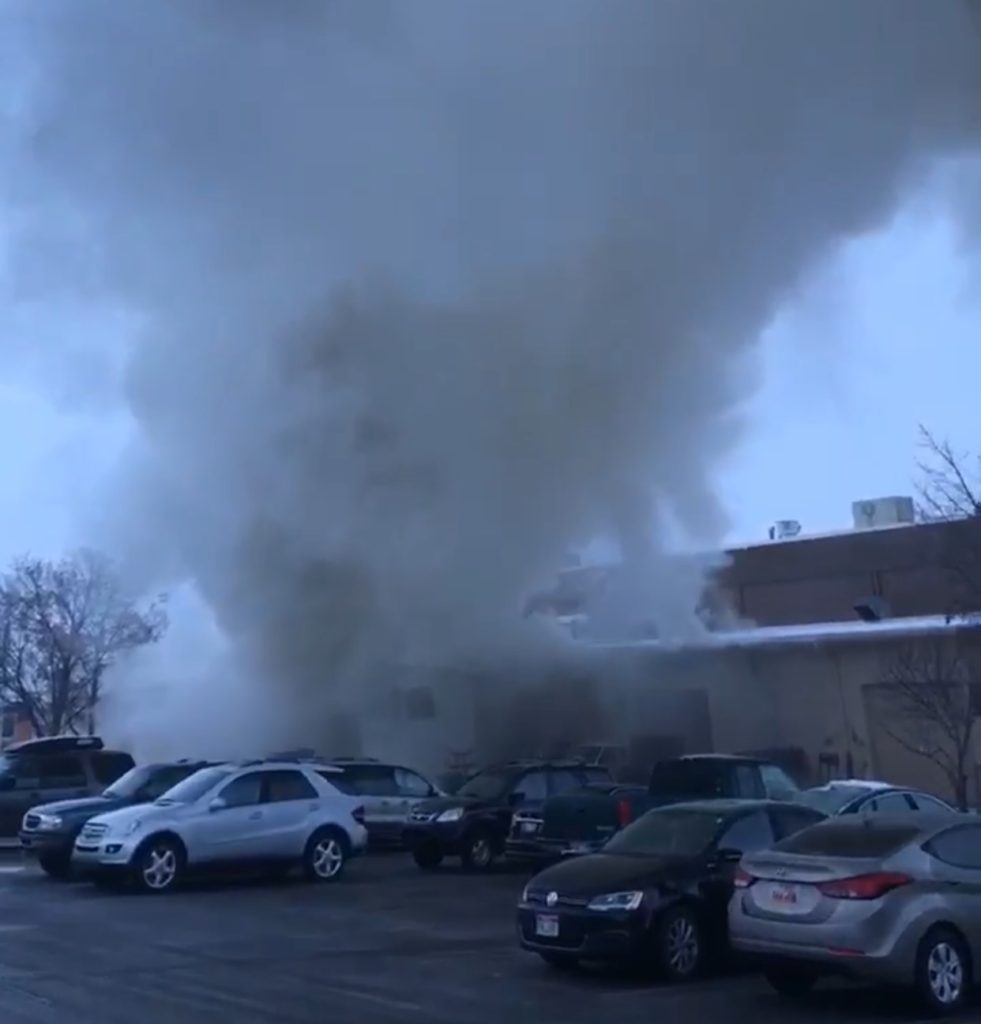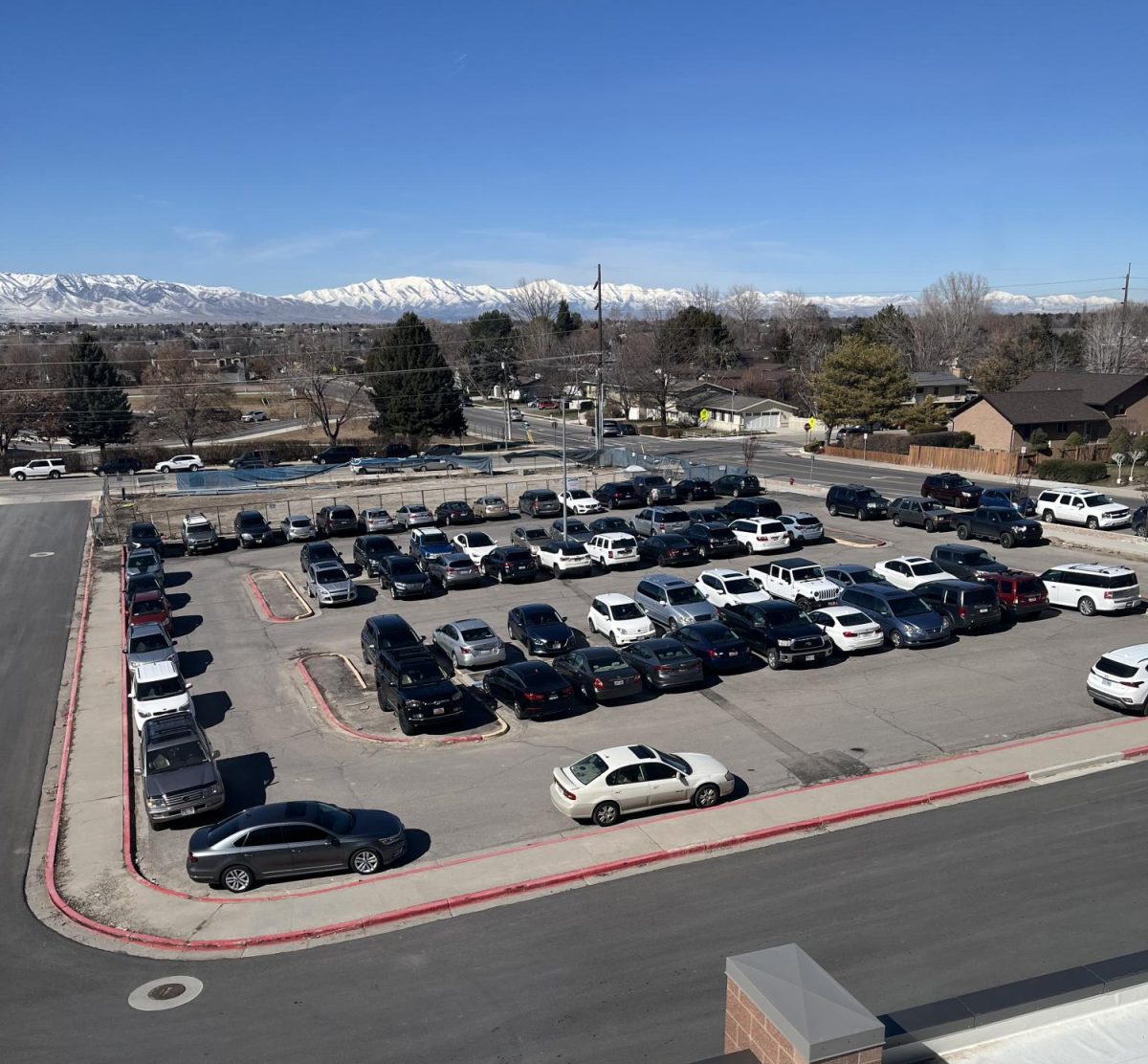Sitting in their third period, Timpview students strained their attention in desperate attempts to stay both focused and awake during the post-Christmas slump. Suddenly, the fire alarm rang throughout the school, overpowering teacher’s voices and starting a buzz of confusion.
Then, the familiar chimes of the intercom and accompanied by the phrase every student leapt to hear: “This is not a drill.”
The Woods room was abuzz Tuesday morning, January 8, with students scrambling in the precious last minutes of the semester to finish their projects. Under Mr Whatcott’s supervision first period crept by with a crazed chaos in which embers were sparked that would change Timpview student’s day.
“I think someone cut through a nail or something on a piece of wood,” Mr. Whatcott said. “Something that sent a little ember back into the vents.”
First period ended, and third period inched its way by minute by minute. Part way through the period, sophomore Gavin White was working on finishing the drawers for his table. He walked to the back of the shop, but noticed something was off.
“I smelled some smoke,” White said. “And I knew that’s not something you typically smell in a school. So I looked around, and saw that there were embers just sitting by the vent in the radial arm saw.”
White hurried to the front of the shop to notify Mr. Whatcott, who was busy helping other students. White then grabbed the fire extinguisher off the wall, and catching the eye of Mr. Whatcott in the process, rushed back to kill the fanning embers.
“A couple other people came over, and we started working with Whatcott, trying to see, trying to stop it, trying to see where it went, so we could cut it off,” White said. “Once we saw the smoke was not where we originally saw the embers, we knew it was up in the dust collector system.”
The dust collection system runs throughout the entire Woods shop, hooked up to nearly every saw in the room to remove as much excess saw dust as possible. The sawdust is then pumped to a dumpster behind the Woods room, where it deposits dust, trash, and anything else claimed by the vents.
Decades of use have caked the insides of the metal vents running up the walls and through the ceiling with sawdust, causing the embers that were sucked into the vent to quickly lite the leftover debris. Once Mr. Whatcott shut off the vacuum system to prevent the sparks from traveling farther throughout the shop, smoke quickly began to fill the room.
No fire alarms are stationed in the Woods room, and the sprinklers are activated by heat rather than by smoke in the shop classes, as smoke is a common occurrence. There was not, however, enough heat to trigger the system, something many teachers in the Industrial Wing of the school are grateful for.
Junior Drew Walker was in Autos, walking from the shop into the classroom to ask Mr. Hassle something when Mr. Whatcott came running in, calling 911 on his cell phone, to tell Mr. Hassle to notify the Main Office.
“We all just went outside, and we turned around, and there was smoke everywhere—on the roof and coming out of the bay door of the Wood shop,” Walker said.
Within a minute, the police and fire trucks began to pour in, as students were making an excited exit from the school.
Three fire stations responded to the call, even eliciting a response from Orem City Fire. The Provo City Fire Department Station #2, located on Canyon Road, was the first to respond.
“The dust intake contained most of the fire, what people saw was a lot of smoke,” Provo Fire Captain Dean York said. “Inside now, you’re going to have a little bit of water damage, where we went looking for hot spots. So you’ll have water damage and a little bit of smoke damage.”
“Schools are one of the safest places to have a fire,” York also said. “Everything that was in place worked. You had an evacuation, because of the practicing evacuations it was done in an orderly fashion, there was accountability.”
Though a replacement dust collector could cost between $50,000 and $100,000 to replace, no major damage was done, and though there will be some slight setbacks in the Woods classes, there doesn’t appear to be a dire need to replace the dust collector.
“Students responded quickly, they were able to evacuate the area,” Dr. Montero stated. “Everybody was respectful and allowed the fire department to come in and do their work and to secure the space and to make sure the fire was contained. . . I was grateful that the response time was pretty fast, that our fire department was able to be here quickly, and were able to contain it.”







